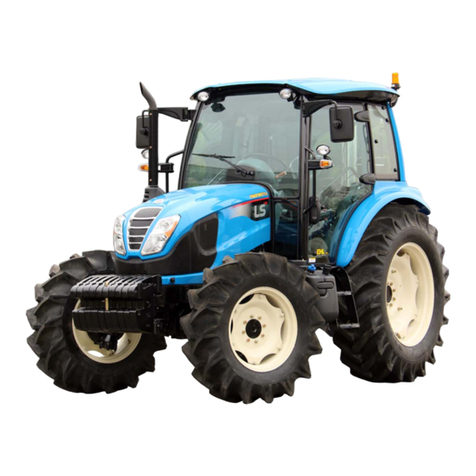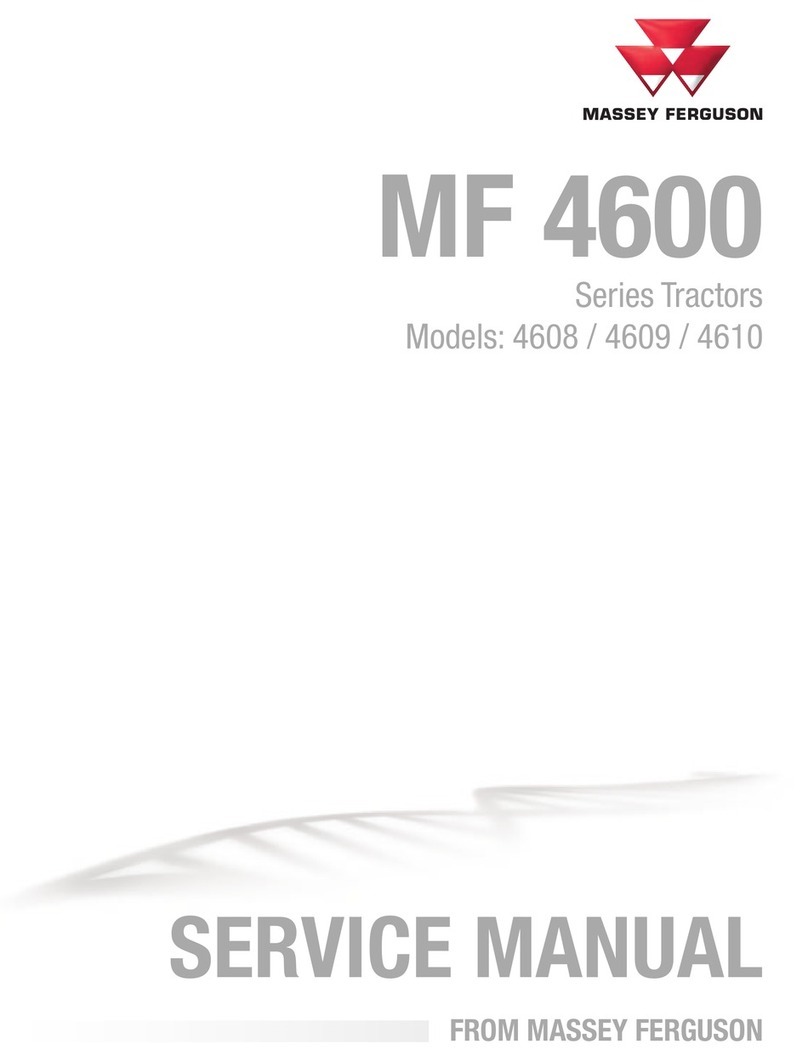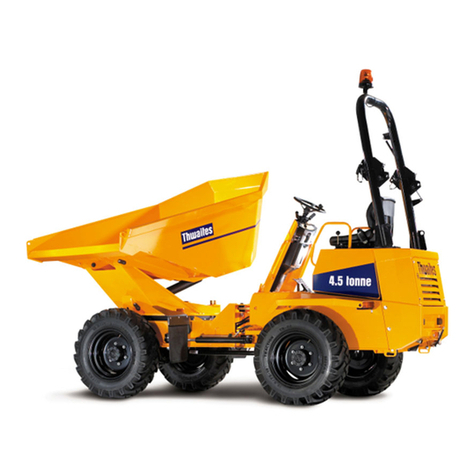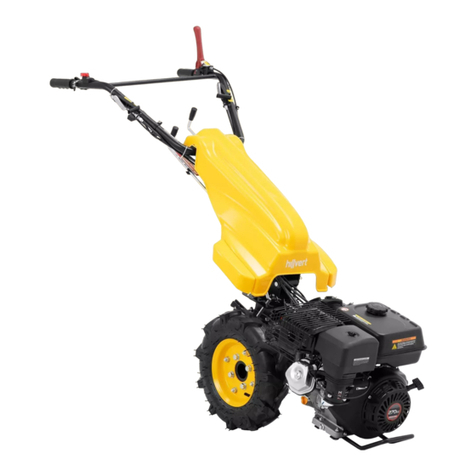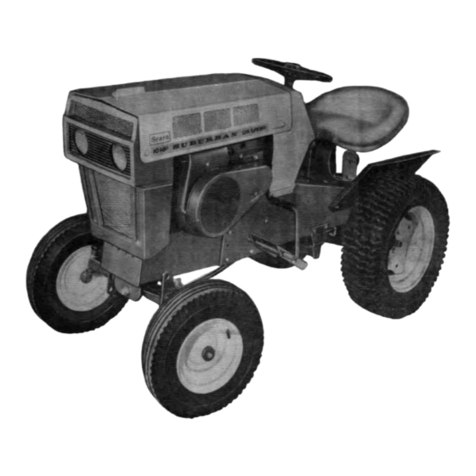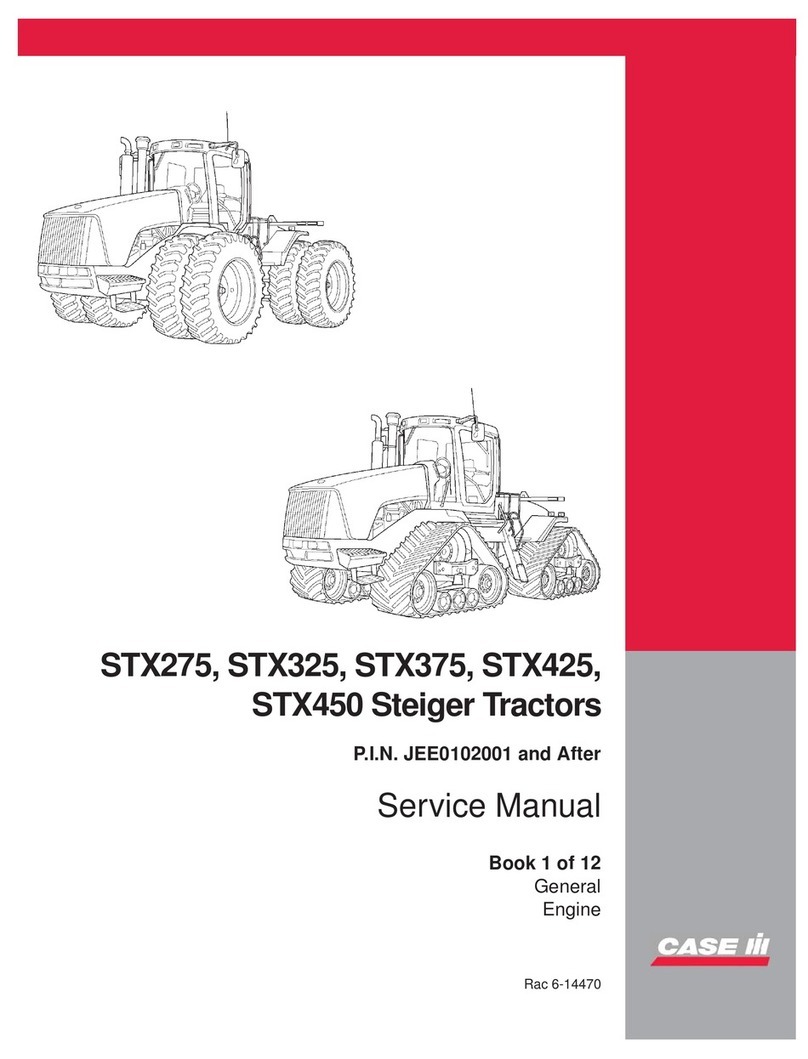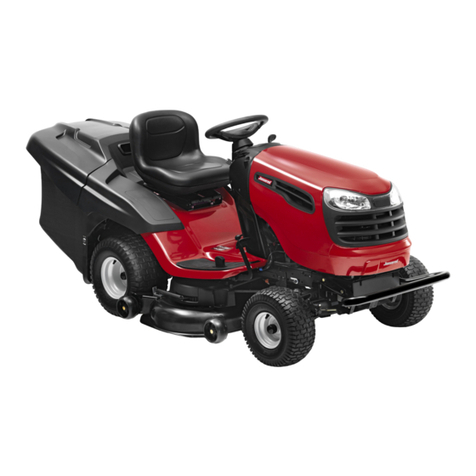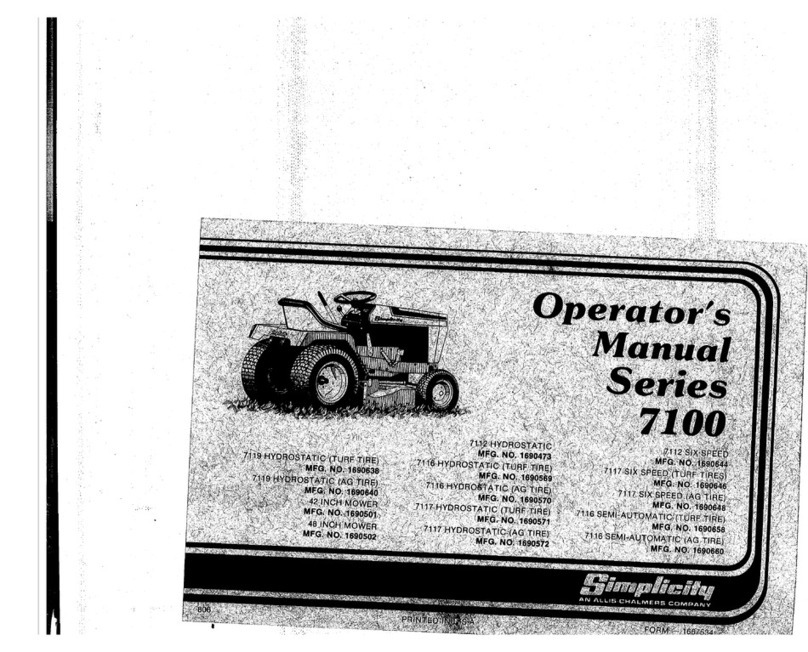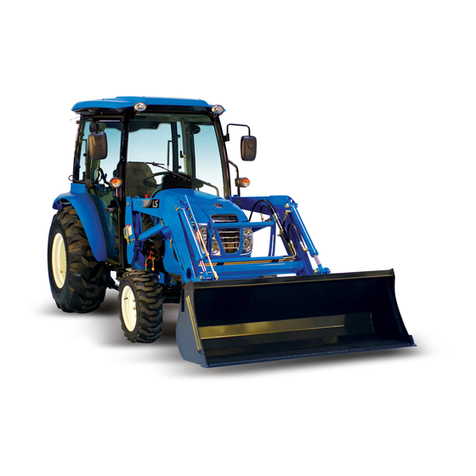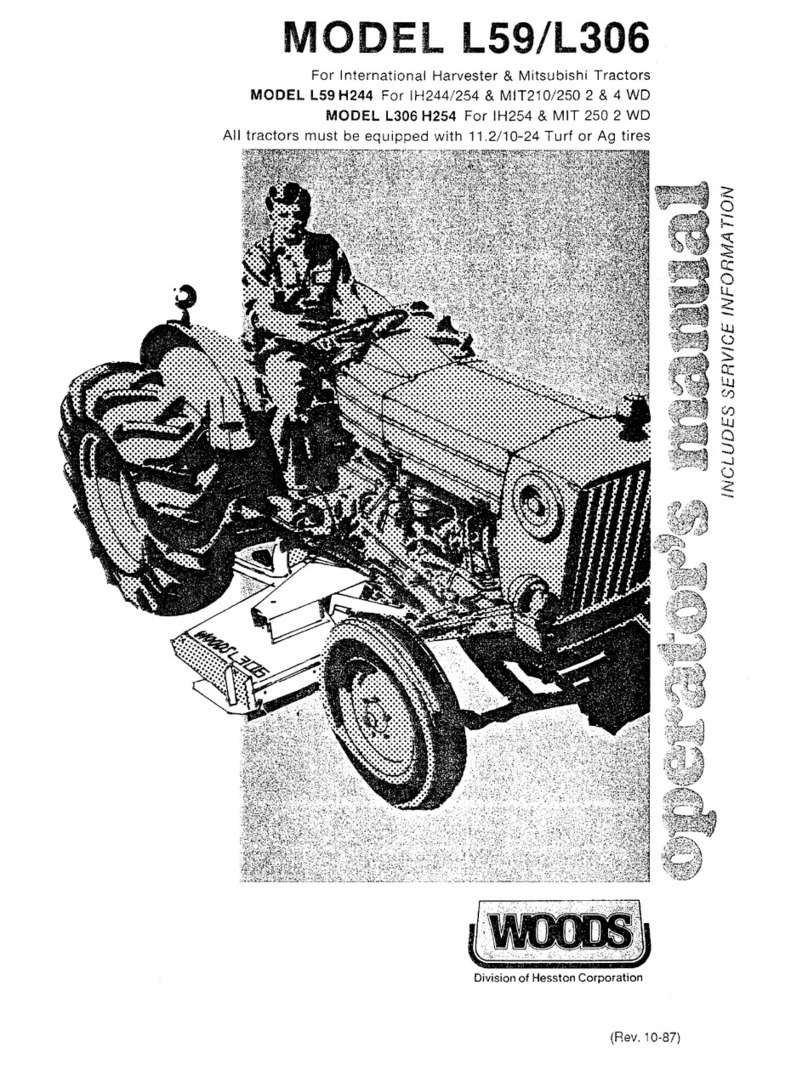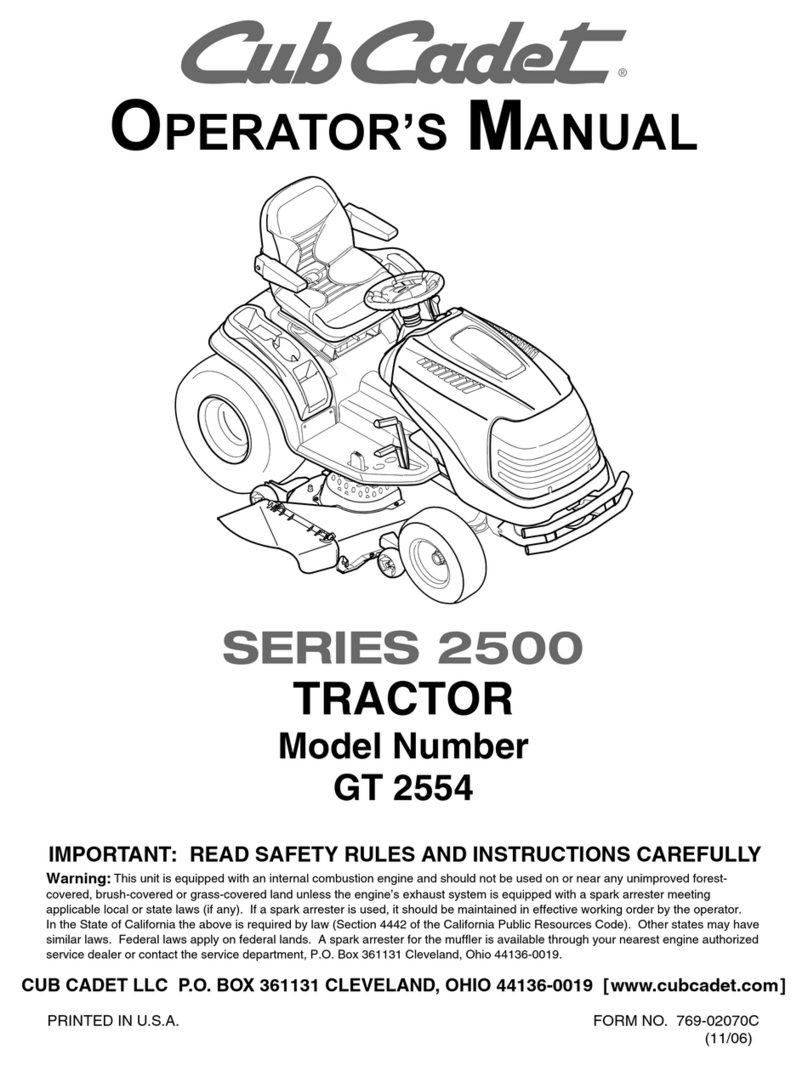Daewoo Mega 250-V Installation guide

K1000896E Operation and Maintenance Manual Copyright 2004 Daewoo
Daewoo reserves the right to improve our products in a continuing process to provide the best possible
product to the market place. These improvements can be implemented at any time with no obligation to
change materials on previously sold products. It is recommended that consumers periodically contact their
distributors for recent documentation on purchased equipment.
This documentation may include attachments and optional equipment that is not available in your
machine’s package. Please call your distributor for additional items that you may require.
Illustrations used throughout this manual are used only as a representation of the actual piece of
equipment, and may vary from the actual item.
Operation and Maintenance Manual
K1000896E
Serial Number 3001 thru 4000
Serial Number 4001 and Up
August 2004
Mega 250-V


K1000896E Operation and Maintenance Manual Table of Contents I
TABLE OF CONTENTS
Safety ......................................................................................... 1-1
To the Operator of a Daewoo Wheel Loader .....................................1-1
General Safety Essentials..................................................................1-2
Location of Safety Labels...................................................................1-3
Unauthorized Modifications..............................................................1-11
Work Site Precautions......................................................................1-11
Operation..........................................................................................1-13
Equipment ........................................................................................1-18
Maintenance.....................................................................................1-22
Shipping and Transportation ............................................................1-25
Operating Controls ................................................................... 2-1
Component Locations ........................................................................2-2
Control Identification...........................................................................2-6
Steering Console and Pedals.............................................................2-7
Transmission Display .......................................................................2-15
Front Instrument Panel.....................................................................2-16
Right Side Switch Panel...................................................................2-25
Pilot Control Valve Lever (Joystick)..................................................2-34
Various Cabin Locations ..................................................................2-36
Heater and Air Conditioner Operation ..............................................2-40
Stereo...............................................................................................2-45
Seat Adjustment...............................................................................2-49
Seat Belt...........................................................................................2-51
Door Side Latch................................................................................2-52
Fuse Box/Relay................................................................................2-53
Operation................................................................................... 3-1
Instrument Panel Control Functions...................................................3-1
New Machine Break-in Procedures....................................................3-1

II Table of Contents K1000896E Operation and Maintenance Manual
Engine Start and Stop ........................................................................3-2
Machine Travel (Standard Transmission Controls) ..........................3-11
Machine Shut Down .........................................................................3-13
F/R (Forward/Reverse) Travel Control System (Option)..................3-16
Additional Braking ............................................................................3-17
Boom Raise Kick-out........................................................................3-17
Bucket Angle Indicator .....................................................................3-18
Boom Lower Kick-out (Option) .........................................................3-19
Adjustment of Bucket Position Switch..............................................3-19
Towing Machine ...............................................................................3-20
If Engine Stalls While Traveling........................................................3-21
Allowable Water Depth.....................................................................3-21
Inspection, Maintenance and Adjustment.............................. 4-1
Preventive Maintenance.....................................................................4-1
Table of Recommended Lubricants ...................................................4-3
Fluid Capacities..................................................................................4-5
Lubrication and Service Chart............................................................4-5
Maintenance Intervals ........................................................................4-8
10 Hour / Daily Service.....................................................................4-10
50 Hour / Weekly Service.................................................................4-21
250 Hour / Monthly Service..............................................................4-28
500 Hour / 3 Month Service..............................................................4-35
1,000 Hour / 6 Month Service...........................................................4-41
1,500 Hour / 9 Month Service...........................................................4-47
2,000 Hour / Yearly Service .............................................................4-50
12,000 Hour / Six Year Service........................................................4-56
Severe Conditions Maintenance ......................................................4-57
Bolt Torque Chart.............................................................................4-58
Electrical System..............................................................................4-59
Engine Cooling System ....................................................................4-60
Fuel Transfer Pump..........................................................................4-62
Hydraulic Pressure Checks..............................................................4-64

K1000896E Operation and Maintenance Manual Table of Contents III
Long Term Storage ..........................................................................4-68
Parking Brake Adjustment................................................................4-69
Tires and Wheels .............................................................................4-72
Transportation .......................................................................... 5-1
Loading Machine on a Trailer.............................................................5-1
Summary of Safety Precautions for Lifting.........................................5-2
Troubleshooting ....................................................................... 6-1
Braking ...............................................................................................6-1
Electrical System................................................................................6-1
Engine ................................................................................................6-2
Hydraulic System ...............................................................................6-4
Steering ..............................................................................................6-7
Travel System ....................................................................................6-8
Specifications ........................................................................... 7-1
General Specifications .......................................................................7-1
Working Range and Dimensions........................................................7-3
Working Capacities ............................................................................7-5
Approximate Weight of Workload Materials .......................................7-5
Index .......................................................................................... 8-1


K1000896E Operation and Maintenance Manual Safety 1-1
1SAFETY
TO THE OPERATOR OF A DAEWOO WHEEL LOADER
Please respect the importance of taking responsibility for your own safety, and that other people who may
be affected by your actions.
Safety information on the following pages is organized into the following topics.
1. “General Safety Essentials” on page 1-2
2. “Location of Safety Labels” on page 1-3
3. “Unauthorized Modifications” on page 1-11
4. “Work Site Precautions” on page 1-11
5. “Operation” on page 1-13
6. “Equipment” on page 1-18
7. “Maintenance” on page 1-22
8. “Shipping and Transportation” on page 1-25
DANGER!
Improper use of wheel loader could cause serious injury or death. Before operating wheel
loader, or performing maintenance, operator or technician must read and understand entire
Operation and Maintenance Manual.
Any operation, maintenance, traveling or shipping methods that do not follow safety guidelines
printed in this manual could cause serious injury or death.

1-2 Safety K1000896E Operation and Maintenance Manual
LEARN SIGNAL WORDS USED WITH SAFETY ALERT SYMBOL
Words "CAUTION," "WARNING," and "DANGER" used throughout this manual and on labels on machine
indicate hazards or unsafe practices. All three statements indicate that safety is involved. Observe
precautions indicated whenever you see the Safety Alert "Triangle," no matter which signal word appears
next to the "Exclamation Point" symbol.
GENERAL SAFETY ESSENTIALS
ACCESSORY APPLICATIONS
Wheel loader has been designed primarily for moving earth with a bucket. For use as a grapple or for other
object handling, contact Daewoo. Lifting-work applications are permitted in approved lift configuration, to
rated capacity only, with no side-loading (unless prohibited by local regulation). Do not use machine for
activities for which it was not intended. Do not use bucket for lifting work, unless lift slings are used in
approved configuration.
SAFETY ALERT SYMBOL
Be Prepared – Get to Know All Operating and Safety Instructions.
This is the Safety Alert Symbol. Wherever it appears – in this manual or on safety signs on the
machine – you should be alert to potential for personal injury or accidents. Always observe
safety precautions and follow recommended procedures.
CAUTION!
Indicates a hazardous situation that, if not avoided, could result in minor or moderate injury. It
may also be used to alert against a generally unsafe practice.
WARNING!
Indicates a hazardous situation that, if not avoided, could result in serious injury or death. It may
also be used to alert against a highly unsafe practice.
DANGER!
Indicates a hazardous situation that, if not avoided, is very likely to cause death or extremely
serious injury. It may also be used to alert against equipment that may explode or detonate if
handled or treated carelessly.

K1000896E Operation and Maintenance Manual Safety 1-3
LOCATION OF SAFETY LABELS
Always keep these labels clean. If they are lost or damaged, attach them again or replace them with a new
label. Make sure replacement parts have current labels.
There are other labels in addition to safety labels that follow so handle them in the same way. Safety labels
may be available in languages other than English. To find out what labels are available, contact your
Daewoo distributor.
4 3
10
15
2
7
2
11 4
6
BZO0180L
11
8
Figure 1 (S/N 3001 thru 4000)

1-4 Safety K1000896E Operation and Maintenance Manual
BZO0190L
1
5
2
39
114
8
10
6
2
7
4
11
8
Figure 2 (S/N 4001 and Up)

K1000896E Operation and Maintenance Manual Safety 1-5
1. WARNING FOR OPERATION, INSPECTION AND MAINTENANCE (4190-2545A, 190-00092)
2. WARNINGS WHEN OPENING ENGINE HOOD (190-00095)
CAUTION!
• Read manual and labels before
operation and maintenance.
Follow instructions and warnings
in manual and on labels on
machine.
• Sound horn to alert people
nearby before operating, and
make sure all persons are clear
of area.
• Always make sure when leaving
operator's seat to:
• Lower bucket or other
working tools to ground.
• "LOCK" transmission selector in "NEUTRAL."
• Set park brake.
• Turn starter switch "OFF." Remove key from switch.
• If hydraulic components and units are ABNORMAL, consult nearest DAEWOO dealer
or authorized service shop. Do not attempt to make an overhaul.
WARNING!
Before opening hood, shut down engine.
ACO1360L
ACO1420L

1-6 Safety K1000896E Operation and Maintenance Manual
3. WARNING FOR HANDLING ACCUMULATOR (190-00703, 190-00099)
Accumulator
Wheel loader pilot control system is equipped with an accumulator. Accumulator will store a pressure
charge that may enable hydraulic controls to be activated for a brief period of time after engine has been
shut down. Activation of any controls may enable selected function to operate under force of gravity.
When shutting machine down, lower front attachment to ground. After engine has been shut down, turn
key to "ON" position and move joystick controls to release pressure in accumulator. Remove key.
WARNING!
Explosion hazard:
• Keep away from flame.
• Do not weld or drill.
CAUTION!
Any raised attachment will lower to ground if accumulator holds a charge.
IMPORTANT
Refer to Shop Manual for service procedures. Do not release any pilot lines until pressure within
accumulator has been released.
ACO1480L

K1000896E Operation and Maintenance Manual Safety 1-7
4. KEEP OUT OF STEERING TURN AREA (4190-1992A, 190-00120)
5. WARNING FOR HIGH TEMPERATURE HYDRAULIC OIL (190-00691, 190-00097)
DANGER!
Keep out of steering turn area.
WARNING!
HYDRAULIC OIL
To prevent hot oil from spurting out:
• Turn engine off.
• Allow oil to cool.
• Slowly loosen cap to relieve
pressure before removing.
AMO0410L
ACO1410L

1-8 Safety K1000896E Operation and Maintenance Manual
6. WARNING FOR HIGH TEMPERATURE COOLANT (190-00692, 190-00097)
7. WARNING FOR BATTERY MAINTENANCE (2190-2533A, 190-00100)
WARNING!
To prevent hot water from spurting out:
• Turn engine "OFF."
• Allow water to cool.
• Slowly loosen cap to relieve
pressure before removing.
DANGER!
• Battery fumes can explode.
Keep sparks and flames away
from batteries.
• Always avoid storing metals like
tools or inflammable materials
around or on batteries.
Explosion or fire can be caused
by short circuiting batteries.
• Sulfuric acid in battery is
poisonous. It is strong enough
to burn skin, eat holes in
clothing, and cause blindness if
splashed in eyes.
If you spill acid on yourself:
1. Flush your skin with water.
2. Apply baking soda or lime to
help neutralize acid.
3. Flush your eyes with water for
10-15 minutes.
Get medical attention immediately.
ACO1410L
ACO1400L

K1000896E Operation and Maintenance Manual Safety 1-9
8. WARNING FOR PERFORMING MAINTENANCE ON FRONT ATTACHMENT
(4190-2546A, 190-00105)
9. WARNING TO USE SAFETY LOCK (190-00121)
DANGER!
To avoid injury, securely brace lift arm
before disassembly of valve or piping.
WARNING!
Safety lock must be in "LOCK" position
when servicing pivot area or transporting
machine.
AMO0430L
AMO0440L

1-10 Safety K1000896E Operation and Maintenance Manual
10. WARNING TAG (190-00695, 190-00098)
11. WARNING FOR WHEEL BLOCK (4190-2547A, 190-00207)
WARNING!
Do not touch when performing inspection
or maintenance.
WARNING!
Block wheels to prevent machine
movement before disengaging park brake.
ACO1450L
BZO0170L

K1000896E Operation and Maintenance Manual Safety 1-11
UNAUTHORIZED MODIFICATIONS
Any modification made without authorization or written approval from Daewoo can create a safety hazard,
for which machine owner must be held responsible.
For safety's sake, replace all OEM parts with correct authorized or genuine Daewoo part. For example, not
taking time to replace fasteners, bolts or nuts with correct replacement parts could lead to a condition in
which safety of critical assemblies is dangerously compromised.
WORK SITE PRECAUTIONS
ATTACHMENT PRECAUTIONS
Options kits are available through your dealer. Contact Daewoo for information on available one-way
(single-acting) and two-way (double-acting) piping / valving / auxiliary control kits. Because Daewoo cannot
anticipate, identify or test all attachments that owners may wish to install on their machines, please contact
Daewoo for authorization and approval of attachments, and their compatibility with options kits.
AVOID HIGH VOLTAGE CABLES
Serious injury or death can result from contact
or proximity to high voltage electric lines. The
bucket does not have to make physical contact
with power lines for current to be transmitted.
Use a spotter and hand signals to stay away
from power lines not clearly visible to operator.
Use these minimum distances as a guideline only. Depending upon voltage in line and atmospheric
conditions, strong current shocks can occur with boom or bucket as far away as 4 - 6 m (13 - 20 ft) from
power line. Very high voltage and rainy weather could further decrease that safety margin.
NOTE: Before starting any type of operation near power lines (either above ground or buried
cable type) you should always contact power utility directly and work out a safety plan with
them.
IMPORTANT
If you need more information or have any questions or concerns about safe operating
procedures or working wheel loader correctly in a particular application or in specific conditions
of your individual operating environment, please consult your local Daewoo representative.
Voltage Minimum Safe Distance
6.6 kV 3 m (9' 10")
33.0 kV 4 m (13' 1")
66.0 kV 5 m (16' 5")
154.0 kV 8 m (26' 3")
275.0 kV 10 m (32' 10")
Figure 3

1-12 Safety K1000896E Operation and Maintenance Manual
BEFORE STARTING TO DIG, CONTACT AUTHORITIES
Below ground hazards also include natural gas lines, water mains, tunnels and buried foundations. Know
what's underneath work site before starting to dig.
BE AWARE OF HEIGHT OBSTACLES
Any type of object in vicinity of boom could represent a potential hazard, or cause operator to react
suddenly and cause an accident. Use a spotter or signal person working near bridges, phone lines, work
site scaffolds, or other obstructions.
USE CARE ON LOOSE SUPPORT
Working heavy loads over loose, soft ground or uneven, broken terrain can cause dangerous side load
conditions and possible tipover and injury. Travel without a load or balanced load may also be hazardous.
If temperatures are changing, be cautious of dark and wet patches when working or traveling over frozen
ground. Stay away from ditches, overhangs and all other weak support surfaces. Halt work and install
support mats or blocking if work is required in an area of poor support.
USE SOLID SUPPORT BLOCKING
Never rely on lift jacks or other inadequate supports when work is being done. Block wheels fore and aft to
prevent any movement.
DIGGING BENEATH OVERHANGS
Digging beneath an overhang is dangerous. Overhang could collapse on top of operator and cause serious
injury or death. Go onto another digging area before steep overhangs are formed. Know height and reach
limits of wheel loader and plan ahead while working. Park wheel loader away from overhangs before work
shut down.
DIGGING BENEATH WHEEL LOADER
Digging beneath wheel loader is dangerous. Earth beneath could collapse. This could cause wheel loader
to tip, which could cause serious injury or death to operator. Working around deep pits, trenching or along
high walls may require support blocks, especially after heavy rainfalls or during spring thaws.
SLOPING TERRAIN REQUIRES CAUTION
Dig evenly around work site whenever possible,
trying to gradually level any existing slope. If it's
not possible to level area or avoid working on a
slope, reducing size and cycling rate workload is
recommended.
On sloping surfaces, use caution when
positioning wheel loader before starting a work
cycle. Stay alert for unstable situations to avoid
getting into them. For example, you should
always avoid working bucket over downhill side
of machine when parked perpendicular to slope.
Avoid full extensions of bucket in a downhill
direction. Lifting bucket too high, too close to
machine, while wheel loader is turned uphill can
also be hazardous.
TURBO-II
440 mm(17'')
TURBO-II
AJO0580L
440 mm(17'')
Figure 4

K1000896E Operation and Maintenance Manual Safety 1-13
STAY ALERT FOR PEOPLE MOVING
THROUGH WORK AREA
When loading a truck you should always know
where the driver is.
Avoid loading over the cab of a truck even if the
driver is in a safe spot. Someone else could
have gone inside, for any number of reasons.
Avoid working where unseen passersby might
be.
Slow down work cycle and use slower travel
speeds in congested or populated areas. Use a
commonly understood signal so that other
members of work crew can warn operator to
slow or halt work in an impending hazardous
situation.
BE AWARE OF AND CONFORM TO LOCAL REGULATIONS
Minimum levels of insurance coverage, work permits or certification, physical barriers around work site or
restricted hours of operation may be mandated by governing authorities. There may also be guidelines,
standards or restrictions on equipment that may be used to perform certain kinds of work. Check and
follow all local requirements, which may also be related to below ground hazards and power lines.
OPERATION
OPERATE WHILE SEATED AT OPERATOR'S
STATION ONLY
Never reach in through a window to work a
control. Do not try to operate wheel loader
unless you're in command position – seated at
controls. You should stay alert and focused on
your work at all times but Do not twist out of seat
if job activity behind you (or to the side) requires
your attention.
Use a spotter or signal person if you can't see
clearly and something is happening behind you.
Replace damaged safety labels and lost or
damaged operator's manuals.
Do not let anyone operate machine unless
they've been fully and completely trained, in
safety and in operation of machine.
HAOA171L
Figure 5
HAOA151L
Figure 6

1-14 Safety K1000896E Operation and Maintenance Manual
BEFORE STARTING ENGINE, DO A "PRESTART" SAFETY CHECK:
• Walk around your machine before getting in operator's cab. Look for evidence of leaking fluid,
loose fasteners, misaligned assemblies or any other indications of possible equipment hazard.
• All equipment covers and machinery safety guards must be in place, to protect against injury
while machine is being operated.
• Look around work site area for potential hazards, or people or property that could be at risk
while operation is in progress.
• Never start engine if there is any indication that maintenance or service work is in progress, or if
a warning tag is attached to controls in cab.
• A machine that has not been used recently, or is being operated in extremely cold temperatures,
could require a warm-up or maintenance service before start-up.
• Check gauges and monitor displays for normal operation before starting engine. Listen for
unusual noises and remain alert for other potentially hazardous conditions at start of work cycle.
• Check tire inflation and check tires for damage or uneven wear. Perform maintenance before
operation.
NEVER USE ETHER STARTING AIDS
An electric grid type manifold heater is used for
cold starting. Glowing heater element can cause
ether or other starting fluid to detonate, causing
injury.
MOUNTING AND DISMOUNTING
Never get on or off a moving machine. Do not
jump on/off. Entry/egress path should be clear
of mud, oil and spills and mounting hardware
must be kept tight and secure.
Always use handholds or steps and maintain at
least 3-point contact of hands and feet. Never
use controls as handholds.
Never get up from operator's seat or leave
operator's station and dismount machine if
engine is running.
Figure 7
HA3O1003
Figure 8
Table of contents



